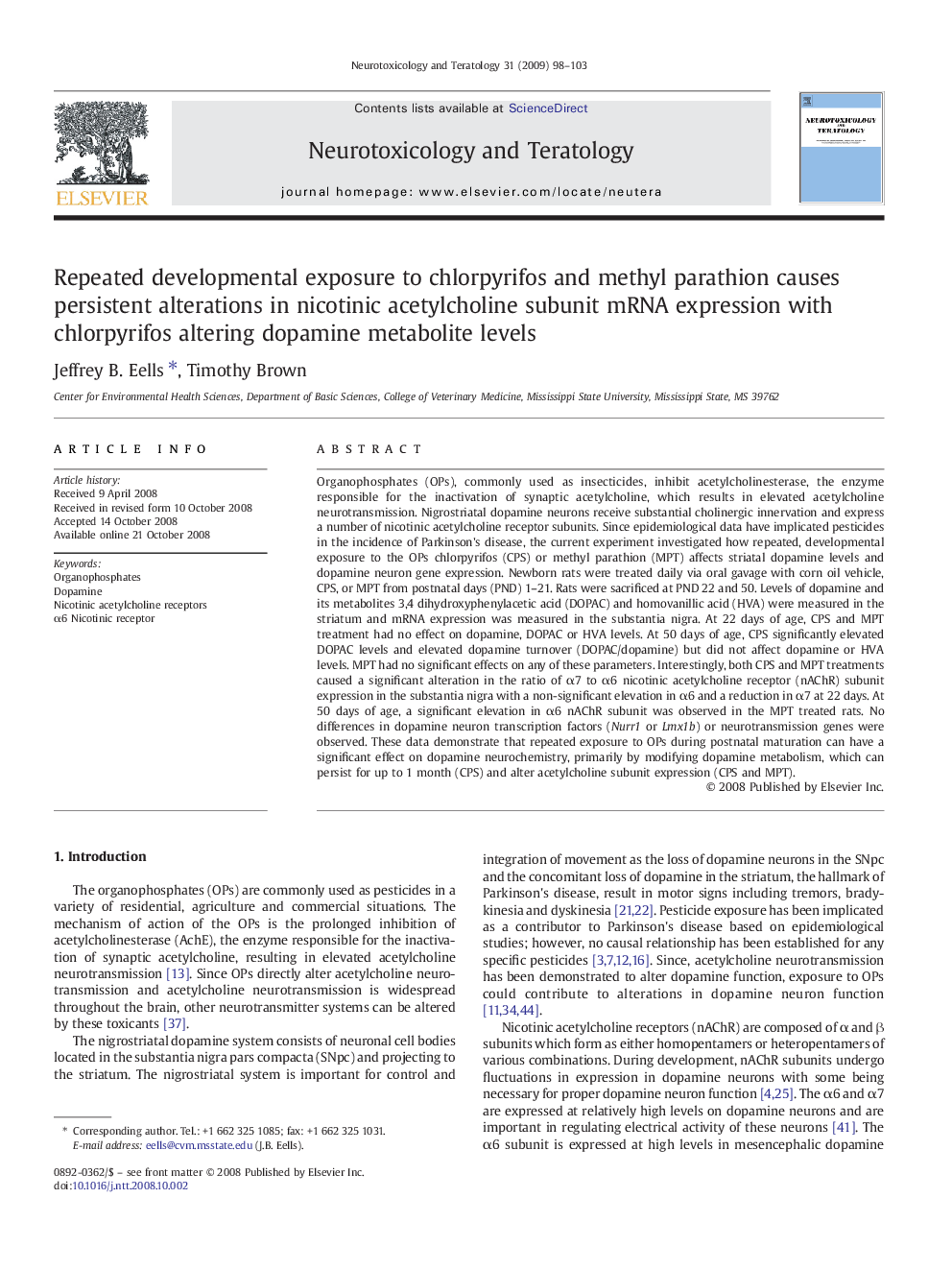| کد مقاله | کد نشریه | سال انتشار | مقاله انگلیسی | نسخه تمام متن |
|---|---|---|---|---|
| 2591663 | 1131821 | 2009 | 6 صفحه PDF | دانلود رایگان |

Organophosphates (OPs), commonly used as insecticides, inhibit acetylcholinesterase, the enzyme responsible for the inactivation of synaptic acetylcholine, which results in elevated acetylcholine neurotransmission. Nigrostriatal dopamine neurons receive substantial cholinergic innervation and express a number of nicotinic acetylcholine receptor subunits. Since epidemiological data have implicated pesticides in the incidence of Parkinson's disease, the current experiment investigated how repeated, developmental exposure to the OPs chlorpyrifos (CPS) or methyl parathion (MPT) affects striatal dopamine levels and dopamine neuron gene expression. Newborn rats were treated daily via oral gavage with corn oil vehicle, CPS, or MPT from postnatal days (PND) 1–21. Rats were sacrificed at PND 22 and 50. Levels of dopamine and its metabolites 3,4 dihydroxyphenylacetic acid (DOPAC) and homovanillic acid (HVA) were measured in the striatum and mRNA expression was measured in the substantia nigra. At 22 days of age, CPS and MPT treatment had no effect on dopamine, DOPAC or HVA levels. At 50 days of age, CPS significantly elevated DOPAC levels and elevated dopamine turnover (DOPAC/dopamine) but did not affect dopamine or HVA levels. MPT had no significant effects on any of these parameters. Interestingly, both CPS and MPT treatments caused a significant alteration in the ratio of α7 to α6 nicotinic acetylcholine receptor (nAChR) subunit expression in the substantia nigra with a non-significant elevation in α6 and a reduction in α7 at 22 days. At 50 days of age, a significant elevation in α6 nAChR subunit was observed in the MPT treated rats. No differences in dopamine neuron transcription factors (Nurr1 or Lmx1b) or neurotransmission genes were observed. These data demonstrate that repeated exposure to OPs during postnatal maturation can have a significant effect on dopamine neurochemistry, primarily by modifying dopamine metabolism, which can persist for up to 1 month (CPS) and alter acetylcholine subunit expression (CPS and MPT).
Journal: Neurotoxicology and Teratology - Volume 31, Issue 2, March–April 2009, Pages 98–103